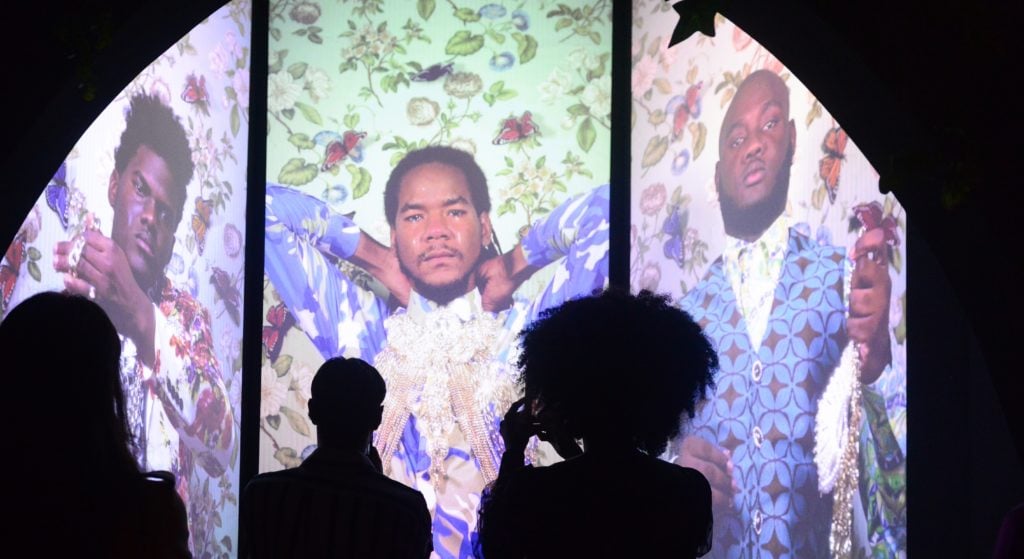
There has been much discussion in recent years about diversity in the art world. But statistics show that the perception of progress is largely a myth.
The 2022 edition of the Burns Halperin Report examines representation in U.S. museums and the art market for work by Black American artists, female-identifying artists, and Black American female-identifying artists by tracking museum acquisitions and exhibitions, as well as auction results, over more than a decade.
If you only read one piece from the report, make it this one. Below are the key facts and figures from our data.
- Museum collections do not reflect the publics they serve. Only 11 percent of acquisitions at 31 U.S. museums between 2008 and 2020 were of work by female-identifying artists. Just 2.2 percent were of work by Black American artists. These totals are around a fifth of what they would be if collections actually represented the population of the United States. (Women account for 50.5 percent of the population and Black Americans 13.6 percent, according to the U.S. Census.)
- The case of Black American women is compounded. They represent 6.6 percent of the U.S. population, but 0.5 percent of museum acquisitions, meaning they are underrepresented by a factor of 13.
- The size of the museum has little bearing on the diversity of its acquisitions. Midsize institutions, with annual budgets of between $15 million and $20 million, outperformed their peers in collecting work by Black American artists broadly and Black American female artists in particular.
- The best years are behind us. Acquisitions of work by women artists peaked in 2009, while acquisitions of work by Black American artists peaked in 2015.
- Acquisitions of work by Black American female artists peaked in 2018. But the total remains vanishingly small: only 220 works entered the collections of all 31 museums that year.
- Context is everything. The Museum of Fine Arts, Boston, collected more work by women—a total of 4,454 objects—than any other museum between 2008 and 2020. But it also acquired more work overall than any other institution, meaning work by women accounted for just five percent of its acquisitions.
- Broader social movements have an impact. Although acquisitions of work by women peaked in 2009, the next two most consequential years came in the wake of the #MeToo movement in 2016 and 2017. Acquisitions for work by Black American artists peaked two years after the 2013 founding of the Black Lives Matter movement.
- Contemporary art museums are making progress faster than other institutions. Of the art they acquired, on average, 48 percent was work by women; 3 percent was by Black American female artists; and almost 9 percent was by Black American artists.
- One man’s market is worth more than the entire market for all women, in all genres, across all periods in time. Sales of work by Pablo Picasso at auction since 2008 totaled $6.23 billion. Art by women, on the other hand, generated $6.2 billion.
- Similar trends hold in the contemporary art market. Auction sales of NFT artist Beeple’s work amounted to half the value of the entire market for Black American female artists across the past 14 years ($98.9 million versus $204 million).
- At the current rate of growth, we won’t see parity in the auction market for work by female artists until 2053.
- Art by women accounts for 3.3 percent of all auction sales between 2008 and mid-2022 ($6.2 billion of $187 billion); art by Black American artists represents 2 percent ($3.6 billion); and art by Black American female artists comprises just 0.1 percent ($204.3 million).
- Change can be volatile. The amount of money spent at auction on work by Black American artists grew almost 400 percent from 2008 ($127.9 million) to 2021 ($626.2 million). However, they saw their share of the market drop from four percent in 2021 to three percent by midway through 2022.
- Demand is concentrated on a handful of artists. The top five Black American artists at auction account for almost 85 percent of the entire auction spend in the category. Basquiat alone accounts for two-thirds of all the money spent on Black American artists at auction. For comparison, the top 20 artists in the overall art market account for less than 30 percent of all sales.



